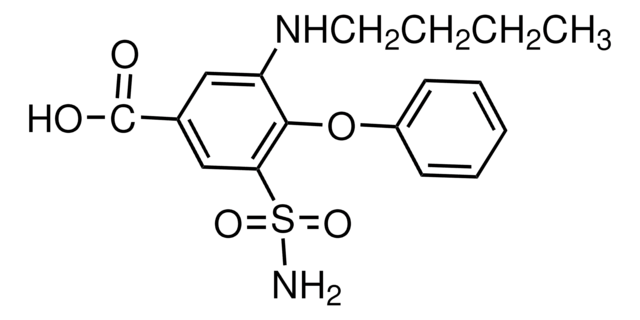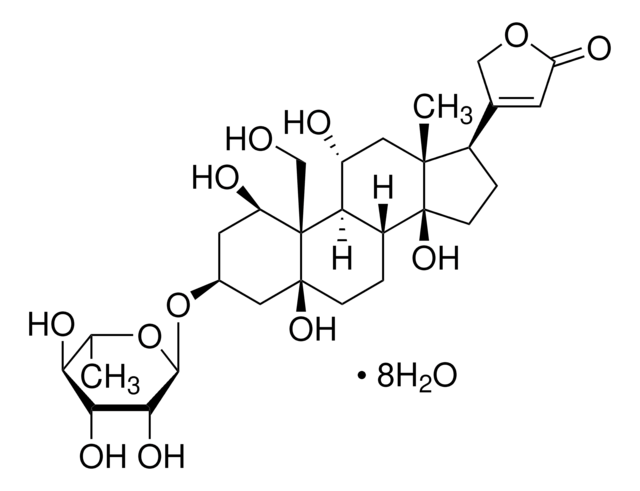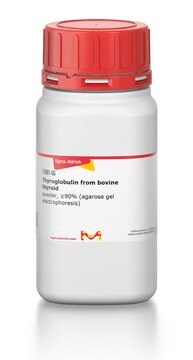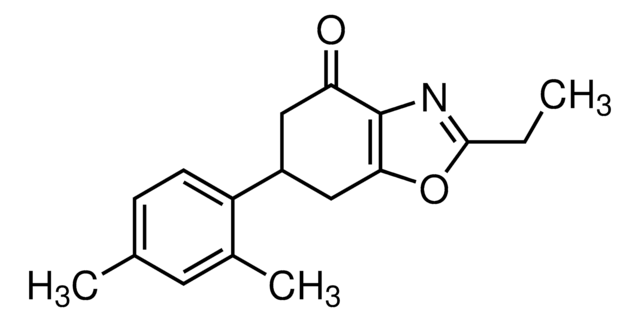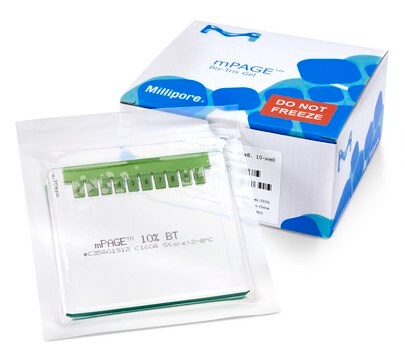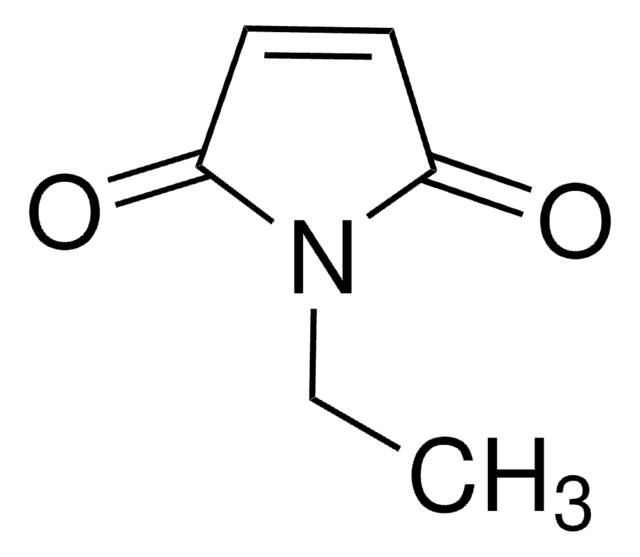D129
R-(+)-DIOA
≥98% (HPLC), solid
Sinonimo/i:
R(+)-Butylindazone, R-(+)-[(2-n-Butyl-6,7-dichloro-2-cyclopentyl-2,3-dihydro-1-oxo-1H-inden-5-yl)oxy]acetic acid
About This Item
Prodotti consigliati
Livello qualitativo
Saggio
≥98% (HPLC)
Stato
solid
Attività ottica
[α]27/D +18.1°, c = 0.7 in methanol(lit.)
Colore
white
Solubilità
H2O: insoluble <0.11 mg/mL
DMSO: >20 mg/mL
0.1 M HCl: insoluble
0.1 M NaOH: soluble
ethanol: soluble
Stringa SMILE
CCCC[C@]1(Cc2cc(OCC(O)=O)c(Cl)c(Cl)c2C1=O)C3CCCC3
InChI
1S/C20H24Cl2O4/c1-2-3-8-20(13-6-4-5-7-13)10-12-9-14(26-11-15(23)24)17(21)18(22)16(12)19(20)25/h9,13H,2-8,10-11H2,1H3,(H,23,24)/t20-/m0/s1
YAWWQIFONIPBKT-FQEVSTJZSA-N
Applicazioni
- short circuit current (Isc) in rat semicircular canal duct (SCCD) epithelium
- uptake of grepafloxacin by THP-1 monocytes
- the uptake of moxifloxacin by THP-1 monocytes
Azioni biochim/fisiol
Codice della classe di stoccaggio
11 - Combustible Solids
Classe di pericolosità dell'acqua (WGK)
WGK 3
Punto d’infiammabilità (°F)
Not applicable
Punto d’infiammabilità (°C)
Not applicable
Dispositivi di protezione individuale
Eyeshields, Gloves, type N95 (US)
Scegli una delle versioni più recenti:
Possiedi già questo prodotto?
I documenti relativi ai prodotti acquistati recentemente sono disponibili nell’Archivio dei documenti.
I clienti hanno visto anche
Il team dei nostri ricercatori vanta grande esperienza in tutte le aree della ricerca quali Life Science, scienza dei materiali, sintesi chimica, cromatografia, discipline analitiche, ecc..
Contatta l'Assistenza Tecnica.
